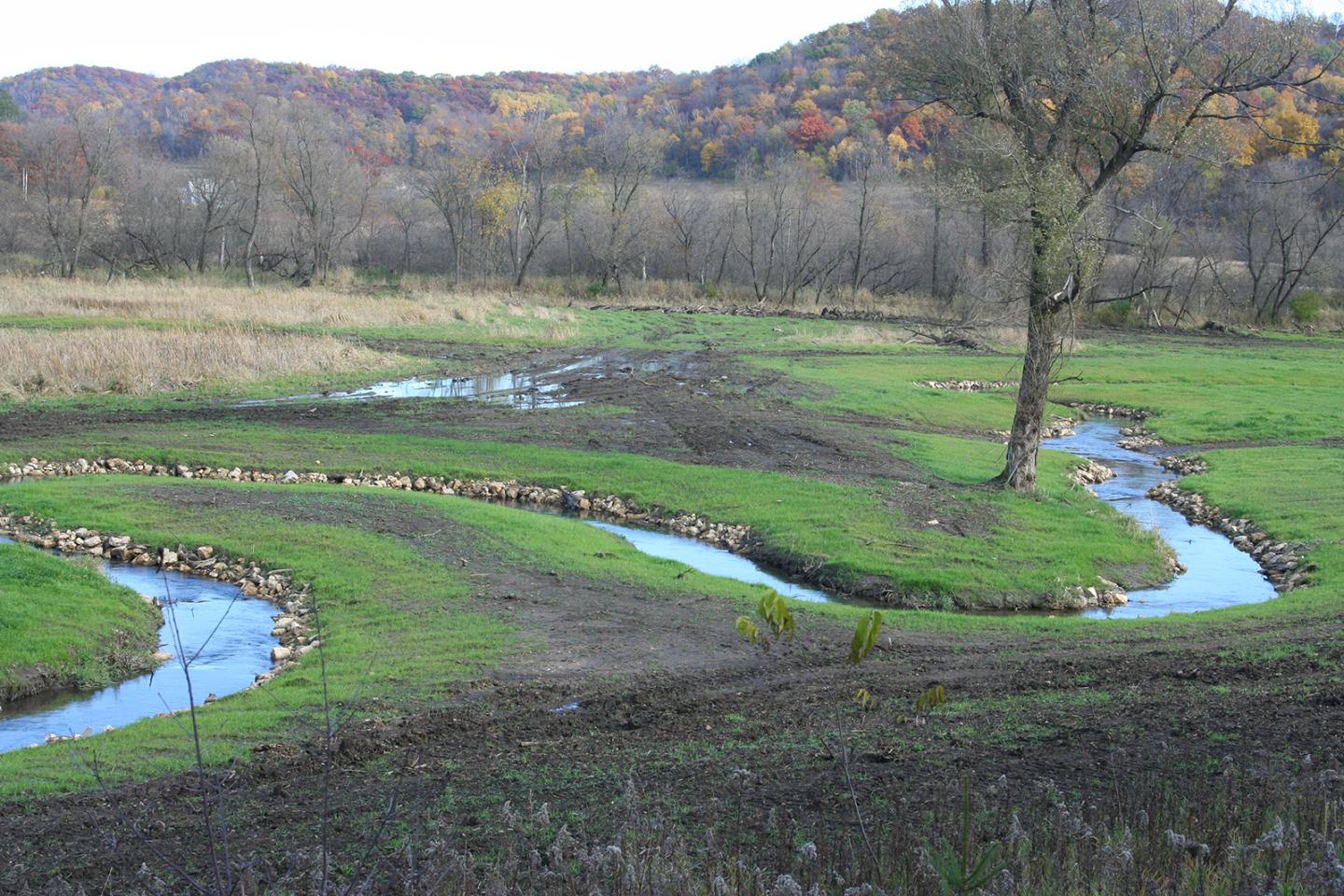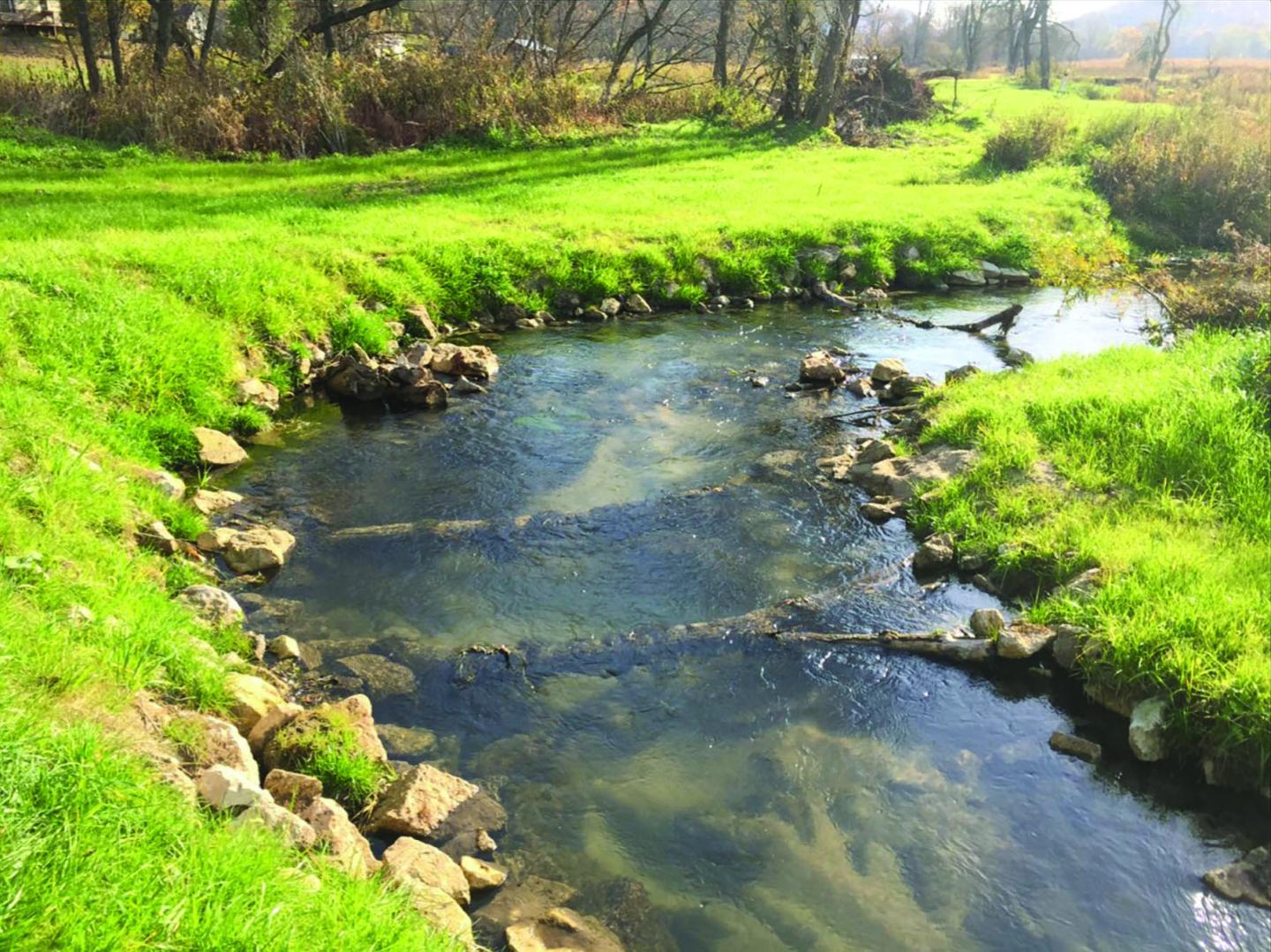Notice


NRCS uses Landscape Conservation Initiatives to accelerate the benefits of voluntary conservation programs, such as cleaner water and air, healthier soil and enhanced wildlife habitat.
Through these initiatives, NRCS seeks to accomplish:
- Conservation beyond boundaries—Landscape-scale natural resource concerns, such as species conservation and water quality, cannot be treated effectively based on geo-political boundaries. NRCS recognizes that natural resource concerns transcend farm, county, and state boundaries.
- A science-based approach—Findings from the multi-agency Conservation Effects Assessment Project (CEAP) indicate the most effective way to increase protection of natural resources is to target conservation to the most vulnerable or valuable areas and to apply a systems rather than a practice-by-practice approach.
- Build on existing locally-led efforts and partnerships—NRCS seeks to maximize the success of initiatives by leveraging partner interest and resources through programmatic and other tools.
- Regulatory certainty for agricultural producers—Where applicable, NRCS is working with regulators so agricultural producers can have certainty that the voluntary conservation systems they implement are consistent with current and potential regulation, as well as sustained agricultural production.
Active Initiatives in Wisconsin
Great Lakes Restoration Initiative
Restoring and protecting watersheds in eight states surrounding the Great Lakes that provide drinking water for over 40 million Americans and drive a $62 billion annual economy of fishing, boating and recreational activities.
Great Lakes Restoration Initiative - Wisconsin
Since 2010, the Great Lakes Restoration Initiative (GLRI) has served as a catalyst for unprecedented federal agency coordination to protect and restore the largest system of fresh surface water in the world.
Learn MoreJoint Chiefs' Landscape Restoration Partnership
Addressing wildfire threats, water quality, and wildlife habitat by removing down wood, treating invasive species in disturbed areas, and establishing trees as necessary.
Joint Chiefs' Partnership - Wisconsin
The Joint Chiefs' Landscape Restoration Partnership (JCLRP) enables NRCS and the Forest Service to collaborate with agricultural producers and forest landowners to invest in conservation and restoration at a big enough scale to make a difference.
Learn MoreMississippi River Basin Initiative
Improving water quality, restoring wetlands, and enhancing wildlife habitat and agricultural profitability in priority small watersheds of the Mississippi River in the 13 states, including Wisconsin
Mississippi River Basin Initiative - Wisconsin
Through the Mississippi River Basin Healthy Watershed Initiative (MRBI), NRCS and its partners help producers in selected watersheds voluntarily implement conservation practices that control nutrient runoff, improve wildlife habitat, and maintain agricultural productivity.
Learn MoreNational Water Quality Initiative
NRCS works with farmers and ranchers in 165 small watersheds throughout the Nation to improve water quality where this is a critical concern.
National Water Quality Initiative - Wisconsin
As USDA’s premiere water quality initiative, National Water Quality Initiative (NWQI) provides a way to accelerate voluntary, on-farm conservation investments and focused water quality monitoring and assessment resources where they can deliver the greatest benefits for clean water.
Learn MoreWorking Lands for Wildlife Initiative: Targeting Monarch Butterflies in Wisconsin
NRCS works with agricultural producers in the Midwest and the southern Great Plains to combat the decline of monarch butterflies by planting milkweed and other nectar-rich plants on private lands. This region is the core of the monarch’s migration route and breeding habitat.
Working Lands for Wildlife - Wisconsin
Through Working Lands for Wildlife (WLFW), USDA uses a win-win approach to systematically target conservation efforts to improve agricultural and forest productivity which enhance wildlife habitat on working landscapes.
Learn MoreInactive/Past Initiatives
Driftless Area Landscape Conservation Initiative in Wisconsin
The Driftless Area is a natural resource treasure, providing habitat for myriad animals and fertile land for farmers, ranchers and forest landowners. Erosion on the steep slopes of the region threatens habitat and farms alike. The Driftless Area Landscape Conservation Initiative (DALCI) was a 5-year effort launched in 2013 to help farmers fight erosion and restore coldwater stream corridors. Learn more
NRCS offered financial assistance to agricultural producers for implementing practices that reduced erosion and improved fish wildlife habitat in the Driftless Area of Wisconsin. Financial assistance through the Environmental Quality Incentives Program (EQIP) focused on reducing erosion and sediment delivery to surface water as well as activities related to improving fish and wildlife habitats. The program provided payments to help implement designated conservation practices. Socially disadvantaged farmers, limited resource farmers, and beginning farmers may qualify for higher program payments.
Learn more - Driftless: Conserving a Unique Midwestern Landscape
Bear Creek Streambank Restoration in Sauk County: Pool, Riffle, Run... The Rhythm for Restoring Streams
Much of Bear Creek had severely eroded banks and sediment covered the stream bottom, preventing spawning of game fish. Now it's a jewel of a restoration that runs 4.5 miles through a scenic valley in southwest Wisconsin, and the trout are back.

Vernon County: EQIP Assists in Restoring Stream Function
Dave Jacobson experienced severe flooding on his farm, exacerbating streambank erosion, threatening adjoining cropland and impairing stream function due to increased sediment loading. Through EQIP, Dave was able to restore his Spring Coulee Creek streambanks through bank shaping, riprap, seeding and more.

Pepin County: Partnering to Restore Fall Creek
Mike Brion and his two sons run Brion Dairy LLC, a century farm with 500 dairy cows and 1,800 acres of alfalfa, corn, soybeans and rye. With the help of NRCS, Brion enrolled in the Fall Creek Water Quality Project to complete numerous water quality projects to improve surface and ground water quality, including a barnyard runoff control system, a waste storage facility and a wetland restoration. His two sons most recently worked with NRCS to restore Fall Creek, a trout stream that runs through the property. Read more about the steps taken in the steam restoration at Brion Dairy.

Lake Superior Landscape Restoration Partnership
The U.S. Department of Agriculture Natural Resources Conservation Service and the Forest Service joined forces in a Landscape Restoration Partnership to improve the health and resiliency of forests on public and private lands. The Forest Service and Natural Resources Conservation Service together invested $30 million in 13 projects across the nation. In Wisconsin, the Beartrap-Nemadji and Bad-Montreal Watersheds in northwest Wisconsin were selected.
The Lake Superior Restoration Partnership worked across public and private lands in Wisconsin to protect water quality and improve habitat for at-risk species. The project focuses:
- Promote adoption of managed grazing for beef and dairy cows to improve soil health and water quality.
- Install large woody debris to expose gravel for trout spawning habitat.
- Improve forest nesting habitat for Golden-winged Warblers, Kirtland Warblers and Sharp-Tailed Grouse.
- Plant trees and shrubs to increase infiltration and stabilize steep slopes.
- Manage barnyard runoff to decrease phosphorus flowing into surface waters.
- Stabilize eroding streambanks and decrease sediment loads to streams.
- Create firebreaks and treat woody residue to lower fire risks. Improve forest stand to slow runoff from snow melt.
- Remove barriers to allow fish passage for native Brook Trout.
- Reduce sediment runoff to trout streams from forest roads
Additional Information
More Conservation News
Visit Farmers.gov to get the latest news and updates from the blog.
Watch the Videos
Browse the collection of videos showcasing the Landscape Conservation Initiatives, from improving water quality to helping restoring pollinators to your farm.
Ready to get started?
Contact your local service center to start your application.
How to Get Assistance
Do you farm or ranch and want to make improvements to the land that you own or lease?
Natural Resources Conservation Service offers technical and financial assistance to help farmers, ranchers and forest landowners.

To get started with NRCS, we recommend you stop by your local NRCS field office. We’ll discuss your vision for your land.
NRCS provides landowners with free technical assistance, or advice, for their land. Common technical assistance includes: resource assessment, practice design and resource monitoring. Your conservation planner will help you determine if financial assistance is right for you.
We’ll walk you through the application process. To get started on applying for financial assistance, we’ll work with you:
- To fill out an AD 1026, which ensures a conservation plan is in place before lands with highly erodible soils are farmed. It also ensures that identified wetland areas are protected.
- To meet other eligibility certifications.
Once complete, we’ll work with you on the application, or CPA 1200.
Applications for most programs are accepted on a continuous basis, but they’re considered for funding in different ranking periods. Be sure to ask your local NRCS district conservationist about the deadline for the ranking period to ensure you turn in your application in time.
As part of the application process, we’ll check to see if you are eligible. To do this, you’ll need to bring:
- An official tax ID (Social Security number or an employer ID)
- A property deed or lease agreement to show you have control of the property; and
- A farm number.
If you don’t have a farm number, you can get one from USDA’s Farm Service Agency. Typically, the local FSA office is located in the same building as the local NRCS office. You only need a farm number if you’re interested in financial assistance.
NRCS will take a look at the applications and rank them according to local resource concerns, the amount of conservation benefits the work will provide and the needs of applicants. View Application Ranking Dates by State.
If you’re selected, you can choose whether to sign the contract for the work to be done.
Once you sign the contract, you’ll be provided standards and specifications for completing the practice or practices, and then you will have a specified amount of time to implement. Once the work is implemented and inspected, you’ll be paid the rate of compensation for the work if it meets NRCS standards and specifications.

